Disney’s Hollywood Studios is in the midst of becoming one of the most popular tourist destinations in the world. With the just-opened Toy Story Land being a huge success and the gargantuan beast that is Star Wars: Galaxy’s Edge on the horizon, the park is about to see an influx of visitors, the likes of which it hasn’t seen since it’s opening in 1989.
Which is why it’s important to note the minor miracles that are the attractions that have been in place for years. For decades now, Hollywood Studios (formerly known as MGM) has been, by far, Disney’s most eclectic park. It’s the only place in the world where guests can journey to the Twilight Zone, speed through the streets of LA while blasting Aerosmith, and become a rebel spy in the Star Wars universe all in the same day.
Thus, it’s fitting that an attraction as beautiful and strange as Muppet Vision 3D would find a home here. An immersive four-dimension experience, Muppet Vision 3D is not only one of the best attractions at Hollywood Studios, it’s flat out the best show of its kind at any theme park.
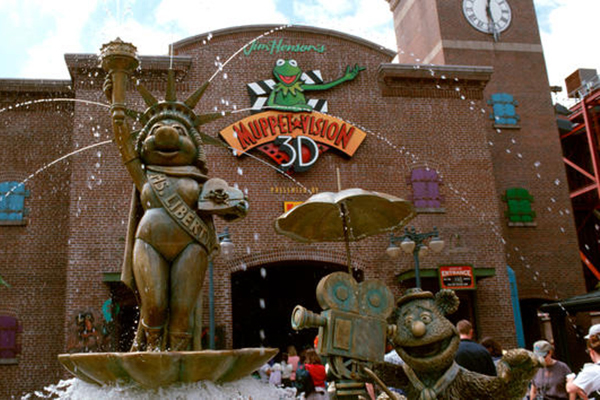
The basic premise of the show is simple: Kermit is giving guests a tour of the Muppets Studio and demonstrating a newly refined film process of their own creation, Muppet Vision 3D. Kermit’s goal throughout the show is to show guests all the unique and varied applicable uses for their new 3D technology and in theory, his plan should work. He’s set up segments such as a Muppet Labs demonstration with Bunsen Honeydew and Beaker, a ‘little song’ from Miss Piggy, and a ‘big musical finale’ from Sam Eagle.
But of course, the Muppets being the Muppets, everything goes awry. Dr. Bunsen Honeydew and Beaker accidentally create a 3D monstrosity, known as Waldo, the spirit of 3D. Miss Piggy’s ‘huge, show-stopping, major song’ takes a turn for the worse when Bean Bunny decides to attempt to help out in a few unexpected ways. And Sam Eagle’s self-described ‘salute to all nations but mostly America’ is the culmination of it all, quite literally resulting in the Muppets destroying the entire theater.
What makes the show such an awe-inspiring accomplishment is the way it applies the Muppet’s typically irreverent and meta approach to the art of constructing a theme park show. Work began on the show in the late ‘80s, as Jim Henson neared signing a deal with Disney to construct not just a show but an entire land for the park. As Henson and Disney Imagineers got to work on creating the show, Henson reportedly grew increasingly infatuated with the idea of how far they could push the guest-interaction elements of the show.
And the results are inspired. The entire show is founded not only on breaking the fourth wall but on utterly demolishing it. The narrative of the show even goes so far as to foreground this approach, ending with the Muppets’ antics quite literally blowing the fourth wall up. From the very opening of the show, the screen is not the show’s stage. The entire theater is the show’s stage.
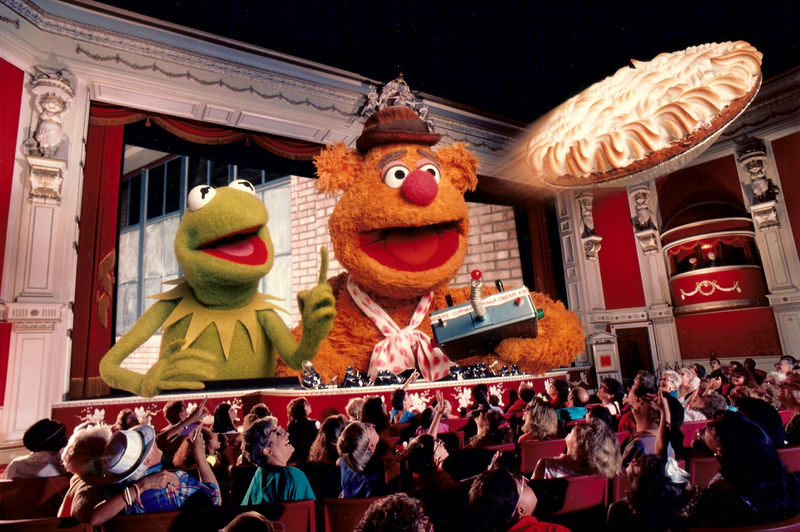
From opening the show with real-life puppets of Statler and Waldorf heckling the audience from box seats in the theater, to having a fully-costumed Sweetums emerge to ask the audience questions, to a Bean Bunny animatronic sneaking into some of the theater seats, to the bubbles and firework effects that fall from the ceiling at various points, to the orchestra full of Animatronic penguins who score the entire show, to the Swedish Chef running the projector from the back of the theater, to the 3D itself. Every creative decision is designed for the purpose of erasing the line between the audience and the show.
The lengths that the film itself goes to re-enforce this idea is absolutely astounding. Utilizing the 3D technology to realize its greatest potential, characters like Kermit, Fozzy, or Gonzo, who only exists within the frame, are able to lean and turn outside of the frame to interact with real-life animatronics and characters inside of the theater.
Within the first minute of the show, Kermit is having a full conversation with the Swedish Chef Animatronic, who is all the way at the back of the theater. Kermit and Fozzy both bemoan and converse with Statler and Waldorf from their box seats. And in what is arguably one of the show’s most inspired uses of initiating conversation between the different dimensions of media it’s playing in, Kermit, Fozzy, and Gonzo all lean out of the frame to talk to a Bean Bunny Animatronic, while the all-CGI Waldo watches, the fully-costumed Sweetums interacts from the theater seats below, and the Statler and Waldorf Animatronics heckle them all from box seats on the other side of the theater.
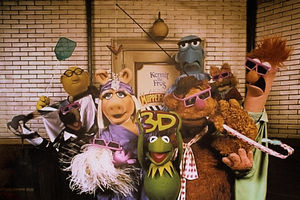
These dimension-crossing hijinks, of course, reach peak insanity just as the show reaches its climax. Sam Eagle’s ‘glorious three-hour finale’ is derailed by Waldo, who has spent the entirety of his screen-time attempting to escape the film like Bean Bunny did. As a CGI creation, and the in-narrative spirit of 3D, Waldo is quite literally bound to the frame. But he finally manages to find a way out, setting the Animatronic penguin orchestra on fire. As a result, the fully-costumed Sweetums emerges at the front of the theater, screaming for the Swedish Chef to ‘stop the projector!’ as he throws a bucket of water on top of the smoking penguins. The now-enraged penguins suddenly rise up with a giant cannon and fire it at the projector, leaving the audience to watch as it shatters and the film strip of the Muppets is literally torn from the screen.
Waldo manages to escape the film strip as its being torn off, leaving only him against a blank canvas to gloat about being ‘out of this silly film’, at last. But the now-enraged Swedish Chef proceeds to draw a gun and shoot at Waldo from across the theater, before eventually pulling out a cannon of his own and destroying not only the screen but entire chunks of the theater decorations as well. The film then ends with Kermit coming through the wreckage of the destroyed screen on the back of a firetruck, apologizing for the technical difficulties but encouraging guests to ‘come see us again sometime’ before the curtain drops.
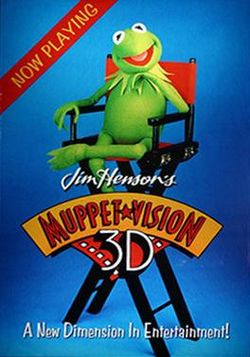
If all of that sounds more than a little bonkers, it is. Muppet Vision 3D was and is one of the most innovative theme park attractions of all time. It’s been often imitated, both in Disney’s own subsequent 3D shows, and in competitors like Universal’s shows, but it has never ever been duplicated.
Directed by Jim Henson himself, the show is tremendously well-made and nothing short of genius. And its masterful craftsmanship is only made all the more poignant and affecting by the knowledge that it was Henson’s final masterpiece. On May 16, 1990, Henson tragically passed away, in the middle of finalizing the show and his deal with Disney.
In the aftermath, Henson’s estate withdrew from the deal with Disney. Not only was the fate of the envisioned Muppets’ land at stake, so too was the fate of Muppet Vision 3D, Henson’s final work. Despite all of this, Disney and Henson’s crew never stopped working on it. Frank Oz took over directorial duties for the last few days of shooting and Disney paid for and oversaw the creation of CGI Waldo all on their own. All of which was done out of respect to Henson, even with the knowledge that there was a strong chance their work would never see the light of day.
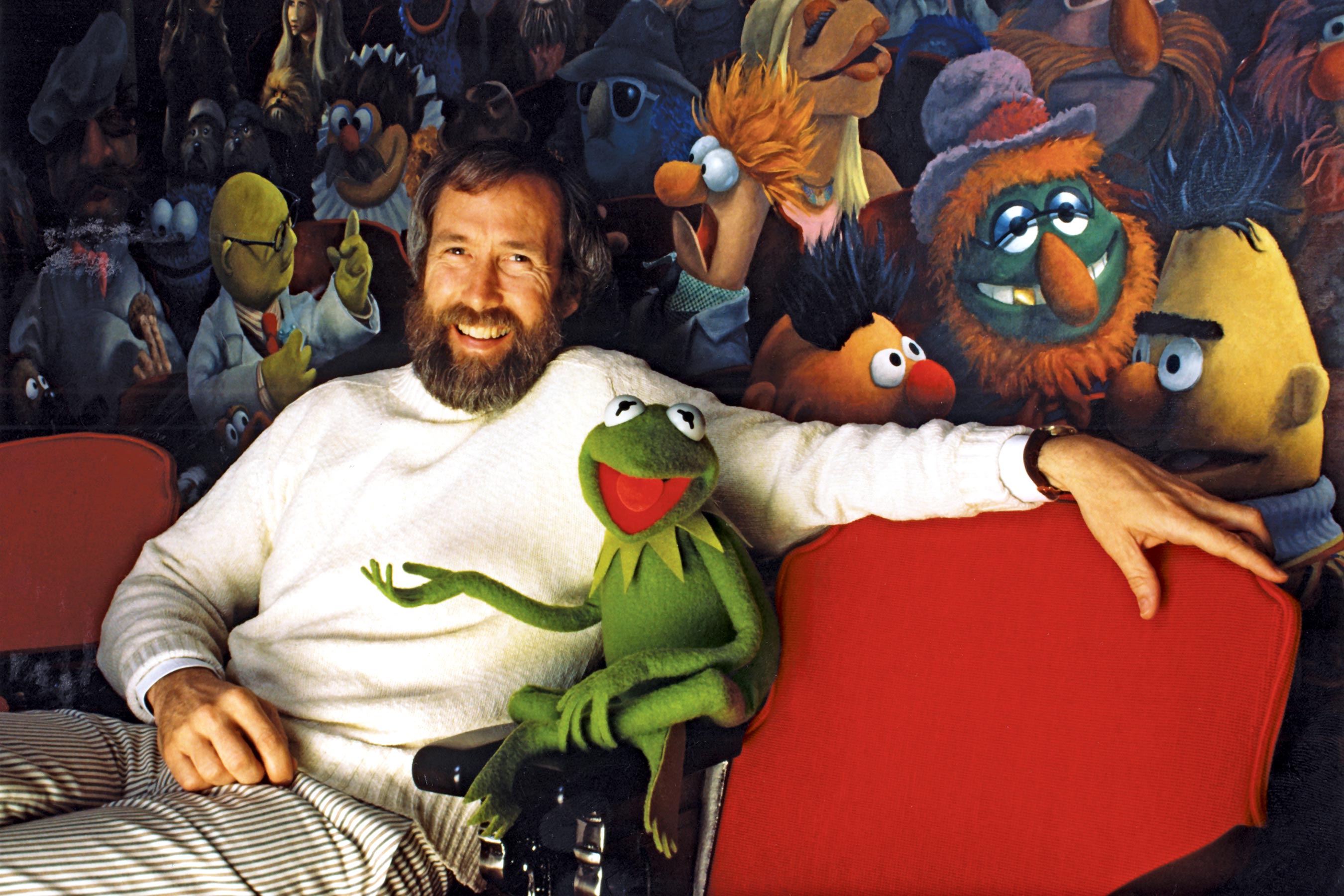
It wasn’t until months later, when Disney CEO Michael Eisner and Jim Henson’s oldest son, Brian Henson, met that things changed. They sat and watched the finished film together and something truly magical happened: they laughed. They laughed until they couldn’t stop laughing because that was Jim Henson’s gift to the world. Brian Henson quickly set about convincing the Henson estate to sign with Disney and on May 16, 1991, exactly one year after Jim’s death, Muppet Vision 3D premiered.
Jim Henson was a great many things; an innovator, an auteur, a genius. But most of all, he was an entertainer. And the fact that his final work, a monument that was in many ways the culmination of all of the different art forms he had explored over his career, has stood and entertained audiences for nearly three decades now is nothing short of a miracle. Even as other sections of Hollywood Studios have been closed down or renovated in favor of crafting new guest experiences, Disney has shown the utmost respect to Henson’s final work. If anything, they’ve doubled down on it, finally realizing Henson’s original dream of creating a Muppets Land, with the surrounding area including a Muppet-themed restaurant and bathroom area, and being officially known as Muppets Courtyard.
So as entire new generations of guests flock to Disney’s Hollywood Studios over the next few years to see what kind of modern innovations Toy Story Land and Star Wars: Galaxy’s Edge have in-store, it is my hope that they will also stumble upon the innovative work of art that just-so-happens to be sitting in a theater right next to the entrance of Galaxy’s Edge.
Muppet Vision 3D is and always will be a pop cultural landmark.